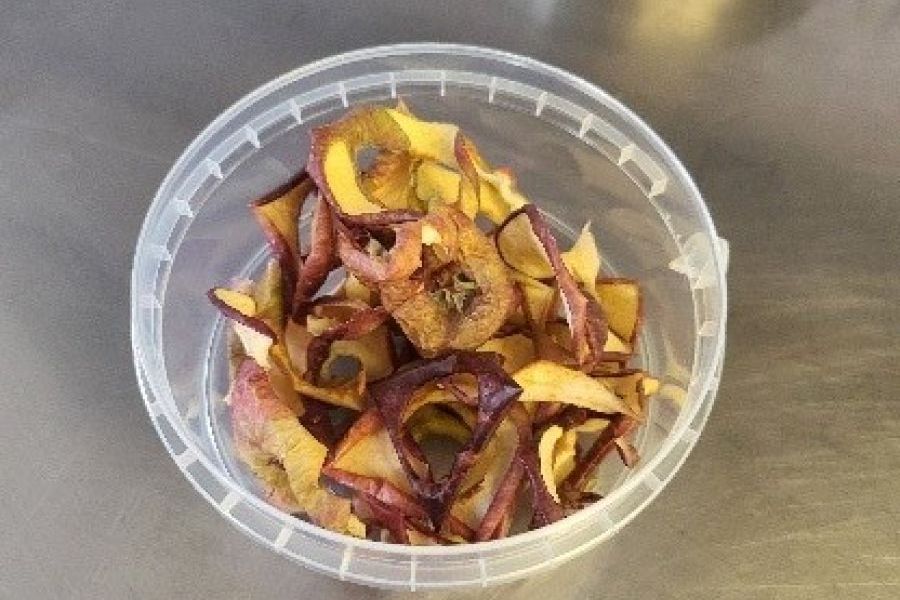
The problem
We aim to reduce food waste as much as possible and use available raw materials efficiently, contributing to the environmental sustainability and economic efficiency of our operations. We are dedicated to innovative methods of processing vegetable and fruit leftovers, ensuring their full use in the kitchen. We implement practices that promote the careful management of food, reduce waste and contribute to sustainable eating.
The solution we used
Use of vegetable peelings and trimmings
Every morning, we collect waste material from root vegetables (parsley, carrots, celery) and other types (onion tops, leek, pepper, kohlrabi trimmings) for the gastronome. We also add meat trimmings and slowly boil everything together with stewing meat, side dishes or when baking. The vegetable or meat broth prepared in this way is then used to baste sauces and other dishes.
If we have a larger quantity of peelings, we dry them and then grind them in a food processor to create a natural flavouring mixture that we use, for example, in soups.
Possible uses of fruit peels
Fruit peels can also be processed efficiently by drying. After heating them gently in a metal sieve or in a teapot with a sieve, we prepare an aromatic unsweetened fruit drink. Popular variations include 'hot apple' (a combination of apple peel or bits, whole cinnamon and cloves) or mixtures with pear peel and ginger. We also use dried herbs and small amounts of fruit from the garden to flavour water or to make tea. Once all these ingredients have been used, they go into a composter - either a conventional garden composter or an electric one, ensuring that the waste material is fully recycled.
Minimising waste through controlled consumption
We also make sure that no unnecessary waste is generated by allowing individual choice of portion by the diner. For example, at snack time, we introduce the concept of a buffet trolley where children choose their own options (e.g. yoghurt alone, yoghurt with fruit, fruit milk or fresh fruit only). Unused ingredients are further processed - yoghurt is used as a topping for salads, fruit for drinks or desserts. If we are left with fruit that is starting to become overripe (e.g. dried apples, overripe pears, bananas), we blend it and dry it into fruit skins. These slices are then used as a natural sweetener in drinks, as part of desserts or as a healthy snacks.
Implementation
Thanks to our approach, we use raw materials efficiently and minimise waste in the kitchen, which not only saves costs but also promotes environmental sustainability. Using peelings for broths and teas, controlled food consumption and composting leftovers are key elements of our responsible approach to cooking and eating. We believe these practices can significantly reduce waste while offering new opportunities to improve the taste and nutritional value of food.
Evaluation






